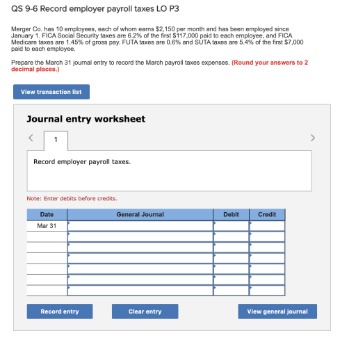Content

Opportunity costs aside, a slow financial close is more than likely an indicator that your processes are cumbersome. That typically means manual and labor-intensive, relying on use of multiple spreadsheets. The bottom line is that a slow close will increase general and administrative (G&A) expense. It could also be an indication of underlying inefficiencies across other financial processes – such as billing, cashflow and accounts payable. Accurate financial information is the backbone of good business decision making, never more so given the high levels of economic volatility and shifting strategic priorities. So it is critical for executives to have timely access to reliable financial data.
- For more information, see Manage the Intercompany Inbox and Outbox.
- However, you can add only optional transaction fields that are defined for the account.
- NetSuite Cloud Accounting Software helps companies implement these best practices for intercompany accounting via important features at both the subsidiary and parent levels.
- A new Portal account can be requested by a colleague with access to the Support Portal.
Investing in the right technology to support automation is an important step that makes all accounting, including intercompany accounting, more efficient and accurate. Consider the systems already in place and aim to achieve the highest level of integration possible. Protect your technology investment by taking advantage of training and customer service offerings from software providers. Identify the person responsible for intercompany accounting and hold them accountable, with deadlines. Centralizing intercompany accounting tasks provides clear points of contact and ownership, in addition to consistency. In this way, intercompany transactions aren’t an afterthought likely to hold up the accounting close each month.
Advanced Intercompany Journal Entry CSV File Requirements
The first line needs to begin with the originating https://intuit-payroll.org/ but after that you may use the receiving subsidiaries. The line level will also show the amount in the that subsidiary’s currency. You must have at least four-line items to submit an advanced intercompany journal entry transaction. For intercompany general journal lines, you do not need to specify the accounts for an individual set of books, but simply give the identification of the partner company. Corresponding intercompany general journal lines are then created in the partner company that result in the balancing of the books of both companies involved in a transaction.
Rising labor costs and shifting expectations are contributing to unprecedented change in the labor market and altering the way Entering Journal Entries To Intercompany Accounts and their executives think about talent management. ESG is an opportunity for F&A teams to have a direct impact on how their organizations interact with the communities around them and how they deliver value to their stakeholders.
Webinar On-Demand: 5 Bright Best Practices for an Easy Financial Close
The journal entries appear in a journal in date order and are then posted to the appropriate accounts in thegeneral ledger. Computerized accounting systems will automatically record most of the business transactions into the general ledger accounts. However, even with computerized accounting systems some manual journal entries are necessary – for example adjusting entries to record depreciation or toaccrue intereston a bank loan. In accounts payable transactions, you debit expenses to the individual organization incurring the cost. When you post the Accounts Payable vouchers, the liability is credited to an account for the corporate organization.
The Universal Journal and Journal Entry Functionality in SAP … – FEI Daily
The Universal Journal and Journal Entry Functionality in SAP ….
Posted: Mon, 20 Dec 2021 08:00:00 GMT [source]
To balance the entry, enter another transaction for Company 2, selecting the Intercompany Other Income account and entering the same amount in the Debit Amount column. To balance the entry, enter another transaction for Company 1, selecting the Intercompany Other Income account and entering the same amount in the Credit Amount column.
Adopt continuous closing/continuous accounting:
The analysis clearly highlighted the desire among respondents to spend more time on financial risk management and analysis and performance measurement activities. While that definition may accurately conjure visions of large multinational conglomerates, intercompany accounting has applications in companies of all sizes.

The Create/Delete Intercompany Receivables screen calculates the amount of each organization’s receivable or payable and includes those amounts in a journal entry. After you post that journal entry, you can generate financial statements that balance by organization. Each period, you make a journal entry to amortize prepaid insurance. The organization that incurred the amortized cost receives the debit entry, but the organization to which the prepaid account belongs receives the credit entry. The incurring organization must record an intercompany payable, and the amortizing organization must record an intercompany receivable. Book-specific advanced intercompany journal entries do not support the Auto-Balance feature.
